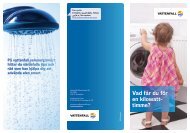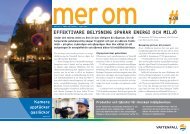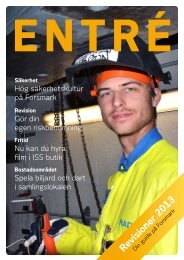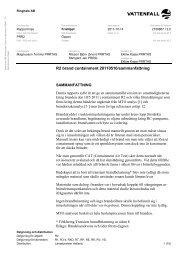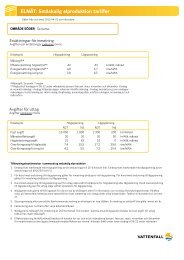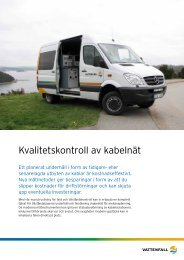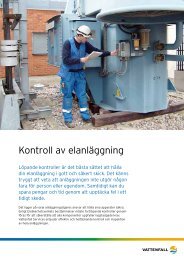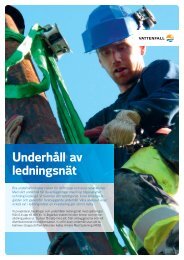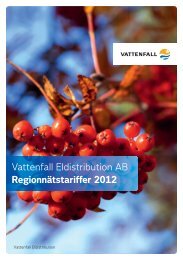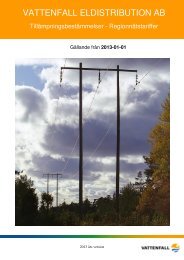This environmental impact assessment for Kriegers flak ... - Vattenfall
This environmental impact assessment for Kriegers flak ... - Vattenfall
This environmental impact assessment for Kriegers flak ... - Vattenfall
Create successful ePaper yourself
Turn your PDF publications into a flip-book with our unique Google optimized e-Paper software.
84 PRESENTATION OF THE AREA<br />
11.6.3 Birds<br />
11.6.3.1 Staging birds<br />
On behalf of the Group, extensive surveys at and<br />
around <strong>Kriegers</strong> Flak have been carried out by IfAÖ<br />
both on the Swedish and German sides of the area.<br />
The surveys were carried out between April 2002 and<br />
March 2004.<br />
An area of 508 km² has been researched from ships<br />
at 35 different occasions with a distance of 4 km between<br />
the transections.<br />
Observations have also been made 16 times from<br />
aeroplanes in a 840 km² area with 2 km between the<br />
transections.<br />
In total, 24 different bird species were observed.<br />
The distribution between different species that were<br />
Survey area – aeroplane transects<br />
Distribution between different<br />
species<br />
observed from ships is shown in the graph below.<br />
Sea gulls dominate the bird population to 60 %.<br />
Most common are herring gull, Larus argentatus, and<br />
great black-backed gull, Larus marinus, mainly living<br />
of Þ sh remains from Þ shing boats, see Þ gure below.<br />
The herring gull was the only species, which was observed<br />
at all test occasions and during the winter 2003<br />
the population consisted of about 3200 individuals.<br />
Spread over the area, the habitation of herring gull<br />
was registered to between 0.11- 5.17 individuals/km²,<br />
great black-backed gull to 0.02-1.32 individuals per<br />
km², lesser black-backed gull, Laurus fuscus, to 0.01-<br />
0.23 individuals/km², common gull, Larus canus, to<br />
0.1-0.77 individuals/km². Little gull, Larus minutus,<br />
and black headed gull, Laru ridibundus, only rarely<br />
migrate through the area and exist in densities up to 0.1<br />
gräns före<br />
ekonomisk zon




